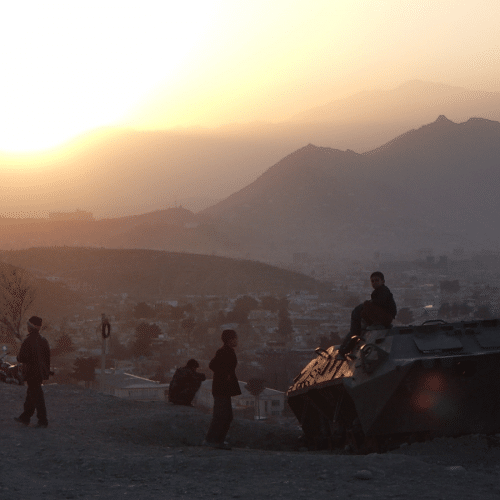
This NCHS paper examines the use of the term legal pluralism in Afghanistan and argues that where access to justice is particularly difficult or neglected, social actors face an absence rather than a plurality of legal orders.
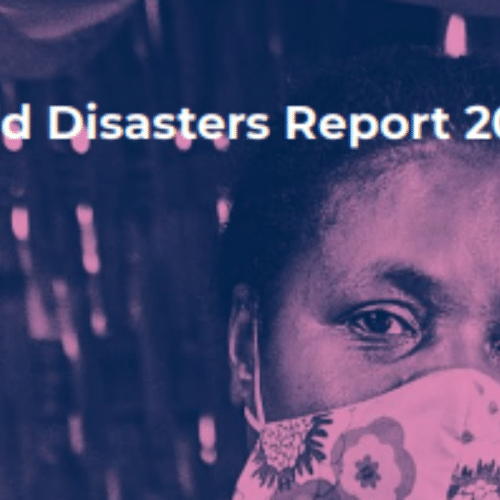
The World Disasters Report 2022: Trust, Equity and Local Action was published by the IFRC in January 2023. The report examines lessons from the Covid-19 pandemic and how to avert the next global crisis.
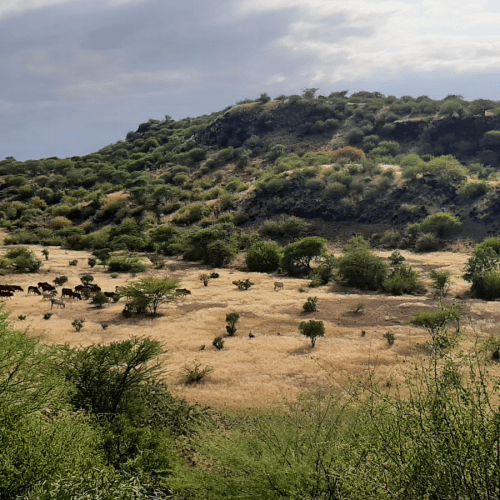
In this new Talking Humanitarianism podcast series, host Edwige Marty (NMBU) explores humanitarianism through the lens of climate resilient development, with a focus on three cases from Kenya.

In this episode of the Talking Humanitarianism podcast, Elena Fiddian-Qasmiyeh delivers the NCHS Annual Lecture titled ‘Against the humanitarian grain’ at the 2022 NCHS Annual Conference.
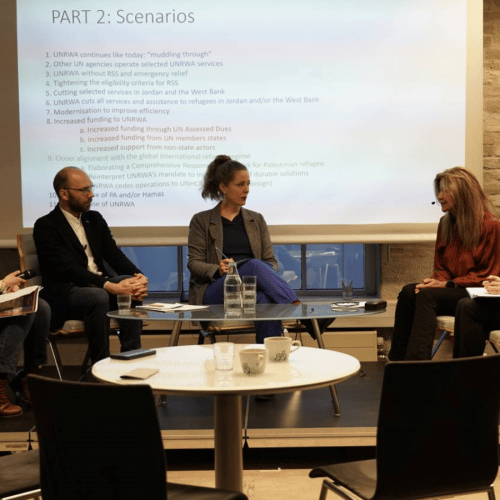
If you missed the conversation with Leni Stenseth, Deputy Commissioner General for UNRWA about the agency’s political and financial challenges, you can now listen to a recording of the discussion.

In this latest episode of the Talking Humanitarianism podcast, Michael Barnett delivers the keynote address titled ‘Humanitarianism in a post-liberal age’ to open the 2022 NCHS Annual Conference.

Edited by Are John Knudsen and Kjersti G. Berg (CMI), ‘Continental Encampment’ explores responses to mass migration and traces the genealogy of humanitarian containment in the Middle East and Europe.
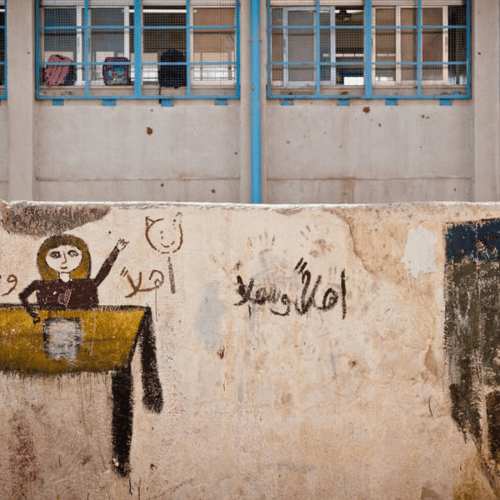
The PRIO MidEast Centre is hosting a breakfast conversation about UNRWA on 15 February with Leni Stenseth, Deputy Commissioner General for UNRWA.
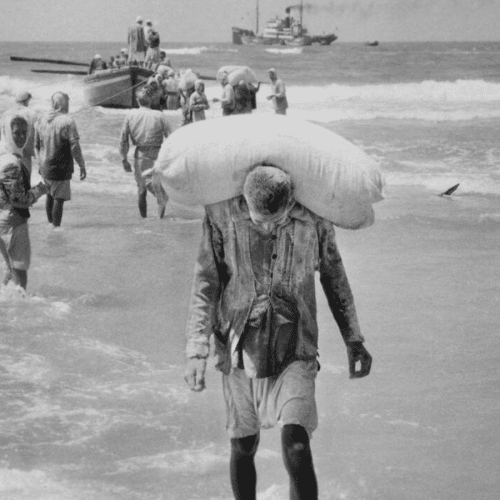
Digital Lab is hosting a breakfast conversation about the portrayal of refugees, based on the exhibition “More than the humanitarian gaze” by UN photographer Jørgen Grinde.
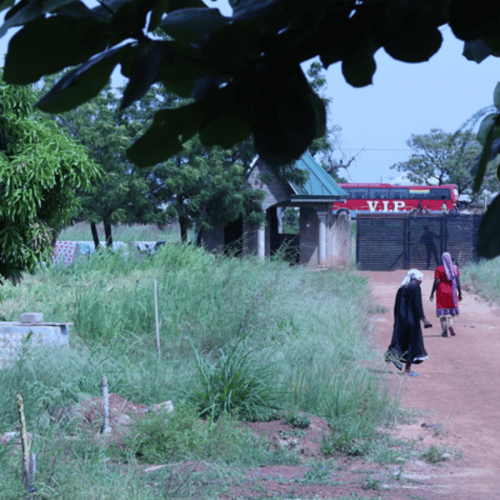
NCHS hosts policy exchange in Oslo examining lessons learned from the implementation of the EUTF for Africa since it was established in 2015 and the implications for Norwegian aid.
A staggering 72 million children—17% of the 426 million children living in conflict areas globally, or 1 in 6—are living near armed groups that have been reported to perpetrate sexual violence against children. That means 3% of all children in the world are living at risk for sexual violence in a conflict zone.
This is one of the figures of wartime risk reported in Save the Children’s 2021 report ‘Weapon of War: Sexual Violence Against Children in Conflict’. The figure is based on a new study conducted at the Peace Research Institute Oslo (PRIO).
concerning upward trend
This background study not only reveals an alarming reality, it identifies a concerning upward trend. This is a global problem that requires urgent attention. There are too few studies focusing on this problem or systematically documenting how children are victimized by sexual violence – directly or indirectly, how prevalent this is, and what the consequences are.
Globally, we estimate that in 2019 about 426 million children lived in a conflict zone, 50 kilometers or closer to violent conflict events. In some of these conflicts, the armed actors commit acts of sexual violence. A large majority of the conflicts with reports of sexual violence in recent years also have reports of children among the victims/survivors of sexual violence by armed actors.
The Sexual Violence in Armed Conflict (SVAC) dataset provides systematic data on the reported prevalence of sexual violence, and which conflict actors have been reported to commit sexual violence against children. The updated SVAC data covers all armed conflicts in the years 1989-2019.
Due to data limitations we do not know exactly how many children have been victimised of sexual violence, only where it has been reported and how pervasive the problem seems to be. Based on this, and using specific information on the location and timing of conflict events and population density we estimate how many children live in areas where conflict actors commit sexual violence against children.
The figure of 72 million children reflects the specific risk associated with sexual violence by actors directly involved in armed conflict, and does not account for risk of sexual violence committed by other types of perpetrators, such as sexual violence by criminal gangs, peacekeepers, law enforcement, or domestic sexual violence.
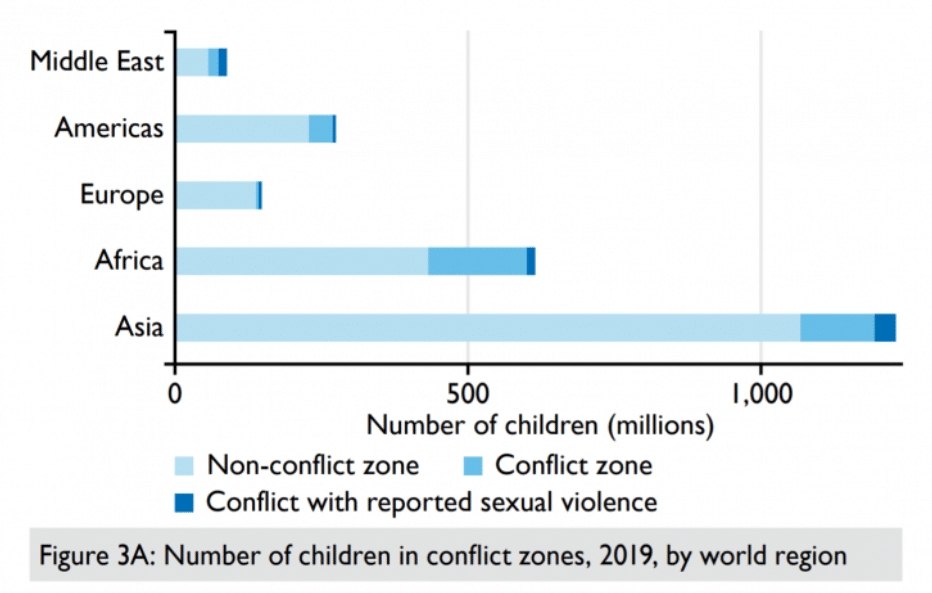
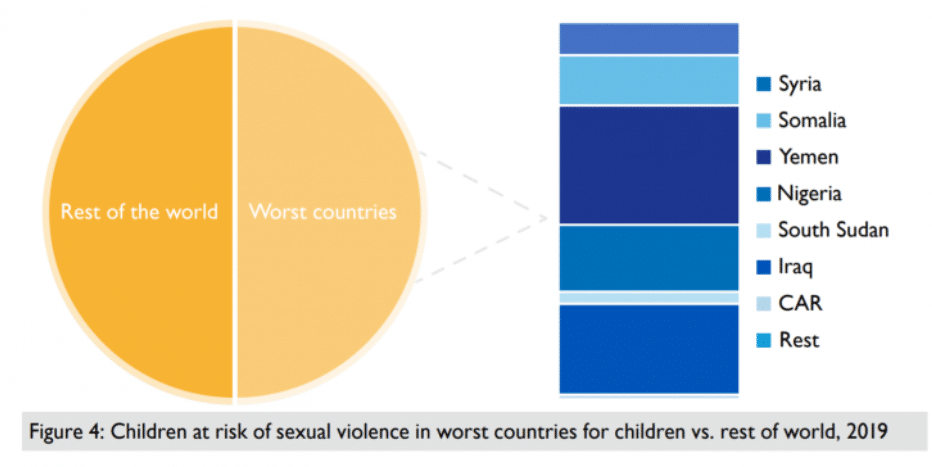
Sexual violence against children is a global problem that requires urgent attention. Policy makers, human rights defenders, and other actors need to devote more resources and dedicated attention to this vulnerable group of war victims to reduce the harm of war to children.
Specifically, we offer three recommendations:
As the child population at risk of wartime sexual violence seems to be increasing, the imperative to take action is more urgent than ever. As a member of the UN Security Council, and chairing the working group on Children in Armed Conflict, Norway now has a golden opportunity to contribute to this end. The Norwegian Minister of Foreign Affairs, Ine Eriksen Søreide, has promised to bring up the results from the report at the UN Security Council demanding that perpetrators of sexual violence in conflict be held accountable.